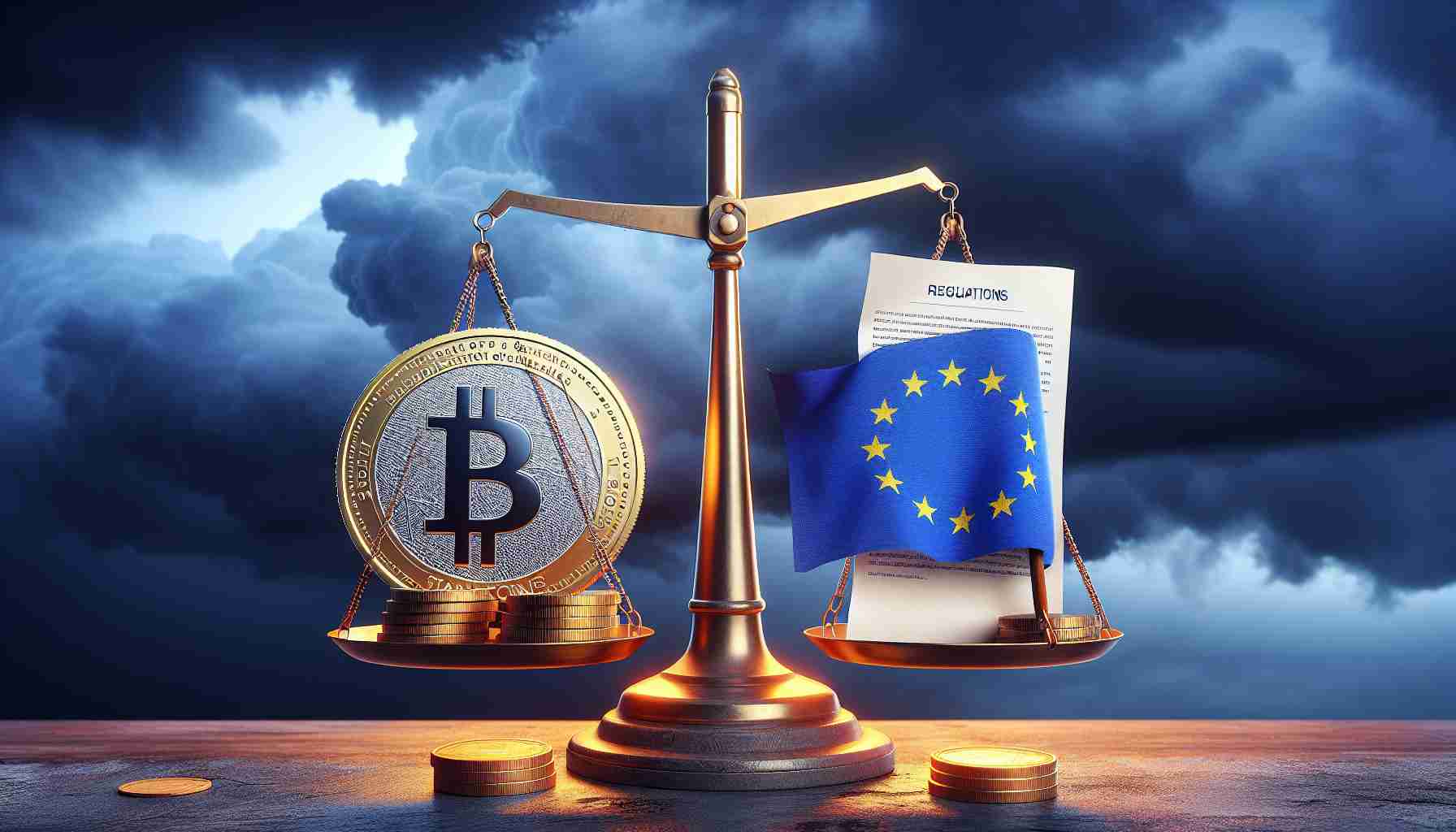European lawmakers have initiated a substantial regulatory framework aimed at the cryptocurrency sector, with a keen focus on digital assets known as stablecoins. The Markets in Crypto-Assets Regulation (MiCA), poised to take effect on June 30, heralds a new era for the cryptocurrency industry in Europe, particularly affecting leading stablecoins such as USDT and USDC. The legislation aspires to boost consumer trust and stabilize the cryptocurrency markets across the continent.
At the forefront of MiCA’s provisions are requirements for transparency, mandatory disclosure of information, and stringent oversight of crypto-asset issuers and traders. A pivotal aspect is the new licensing system for stablecoin operators, akin to the traditional banking institutions’ regulatory standards.
Major exchanges like Binance and Coinbase face the challenge of aligning their operations with MiCA. To comply, they must rigorously ensure their stablecoin offerings adhere to the new guidelines, or face restrictions, as Binance has indicated to users. Nevertheless, they remain committed to providing regulated stablecoin alternatives or other cryptocurrencies where necessary.
The impetus for the European Union’s attention on stablecoins can be traced back to high-profile incidents like Terra Luna’s collapse, raising concerns over opaque capital reserves and the overall reliability of such currencies. Furthermore, stablecoins offer avenues to circumvent taxes on cryptocurrency gains, presenting challenges to the EU’s fiscal policies and sovereignty, particularly when American companies predominantly manage these assets.
Opposition to the new regulation arose, arguing that it could stifle innovation and potentially drive investors toward unregulated, riskier platforms, thus contrasting the intended purpose of consumer protection. In the event of stringent regulations, crypto businesses could migrate to more favorable jurisdictions outside of Europe.
The journey toward MiCA’s application reveals complexities, with concerns about legal clarity and insufficient preparation time for affected entities. With the crypto industry’s significant market valuation, any uncertainty surrounding prominent stablecoins like USDT and USDC could have widespread financial implications for investors and the market at large.
Importance of Stablecoins in the Crypto Market:
Stablecoins play a critical role in the cryptocurrency market by providing a less volatile option compared to traditional cryptocurrencies like Bitcoin or Ethereum. They are designed to be pegged to more stable assets, like fiat currencies or commodities, to maintain a consistent value. This pegging to real-world assets makes stablecoins a vital tool for traders and investors who wish to avoid the high volatility of other cryptocurrencies. They are commonly used for daily transactions, as a store of value, and as a means of transferring money across borders quickly and with relatively low fees.
Key Challenges and Controversies:
One of the primary challenges of the new European crypto asset regulation is ensuring that stablecoin operators can meet the strict requirements without inhibiting innovation or driving businesses away from the European market. Concerns have also been raised about consumer rights and the balance between protection and overregulation.
– Some key questions include:
– How will the new regulations affect the overall liquidity and stability of the stablecoin market in Europe?
– What measures will be taken to ensure adequate preparation time for crypto businesses to comply with the MiCA regulation?
– Will the regulation impact European competitiveness in the global cryptocurrency space?
Advantages of MiCA:
– Increased Consumer Protection: By establishing clear regulatory guidelines, consumers may be better protected from fraudulent operations and market manipulation. Enhanced trust in the sector could lead to increased adoption of cryptocurrencies.
– Market Stabilization: Introduction of licensing system and capital requirements might lead to a more stable and reliable market for crypto assets.
– Legal Clarity: A comprehensive legislative framework provides clear rules for the industry, potentially attracting more institutional investment.
Disadvantages of MiCA:
– Regulatory Burden: Compliance with the regulation could result in increased costs for crypto businesses and barriers to entry for start-ups.
– Innovation Stifle: Overregulation could potentially dampen the innovation that has been central to the crypto market’s growth.
– Market Fragmentation: Inconsistent regulatory regimes across different jurisdictions could lead to market fragmentation and complexities for international crypto businesses.
In addition to adding relevant facts, please note that I cannot guarantee the full validity of an external URL, as it is not within my technical capabilities. I urge you to verify the reliability of any external sources before accessing them. If you are looking for more information on the topic, refer to reputable news outlets that cover finance and cryptocurrency, regulatory bodies such as the European Securities and Markets Authority (ESMA), or official announcements from the European Union for the latest developments in European cryptocurrency regulation.



